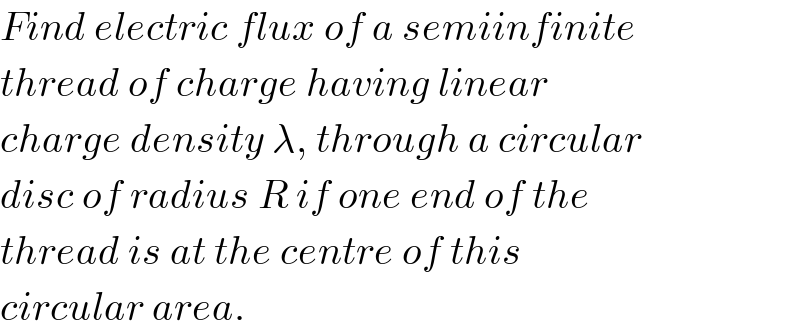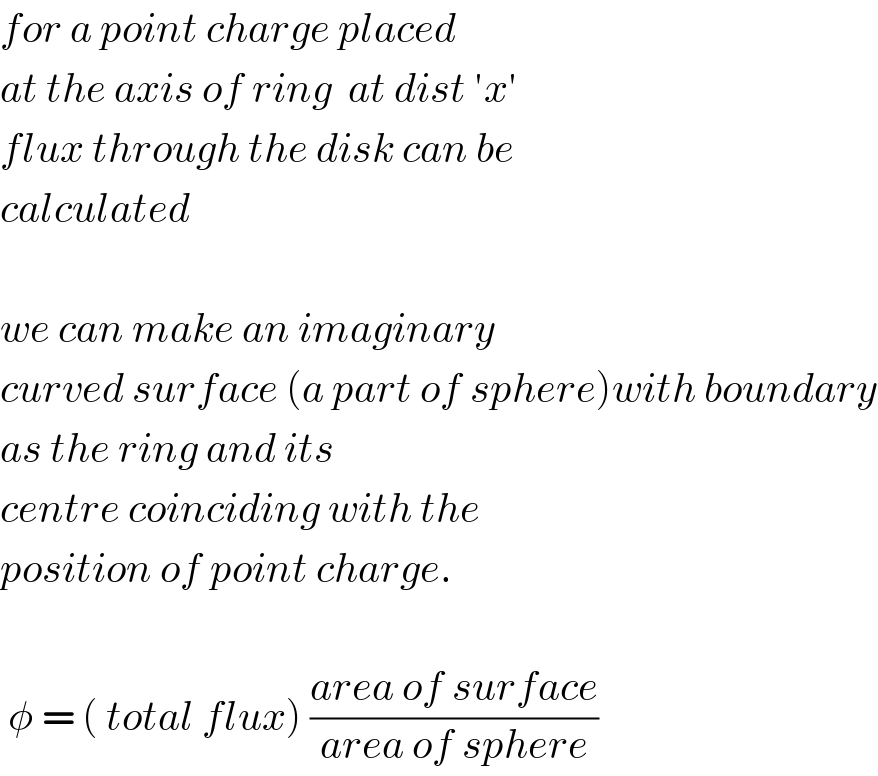
Question and Answers Forum
Question Number 33450 by ajfour last updated on 16/Apr/18

Commented by ajfour last updated on 16/Apr/18

Answered by 33 last updated on 18/Apr/18
![consider an element of lenght dx at dist x from centre of ring dφ = (dq/(2ε_0 ))(1−(x/(√(R^2 +x^2 )))) φ = ∫_( 0) ^( L) (((λdx))/(2ε_0 )) (1−(x/(√(R^2 + x^2 )))) ⇒ φ = (λ/(2ε_0 ))[x− (√(x^2 + R^2 )) ]_0 ^L φ = (λ/(2ε_0 ))lim_(L→∞) {L−(√(L^2 +R^2 )) +R} φ = ((λR)/(2ε_0 ))](Q33475.png)
Commented by ajfour last updated on 17/Apr/18

Commented by 33 last updated on 19/Apr/18

Commented by 33 last updated on 18/Apr/18

Commented by 33 last updated on 18/Apr/18

Commented by 33 last updated on 18/Apr/18

Commented by 33 last updated on 18/Apr/18

Commented by ajfour last updated on 18/Apr/18

